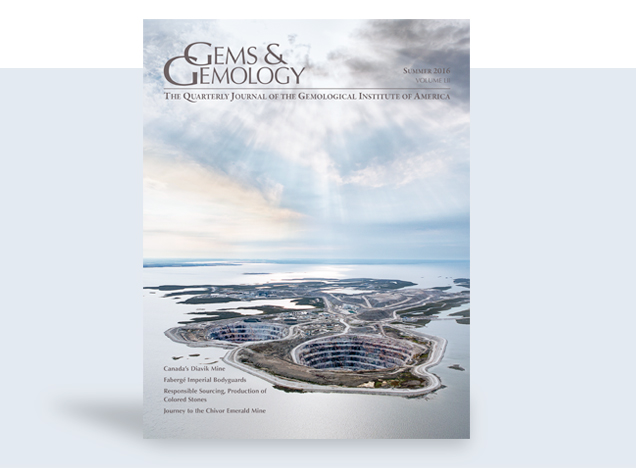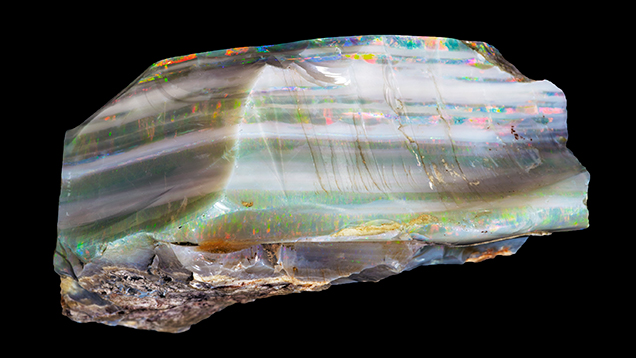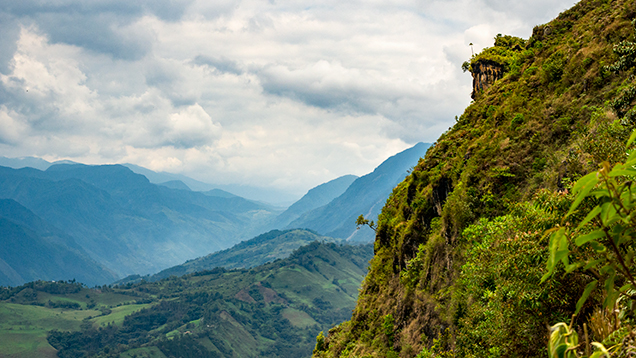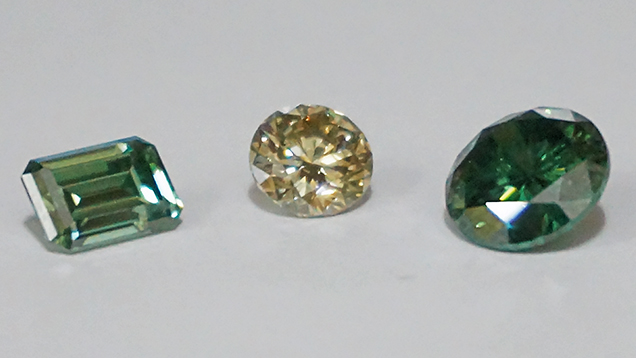Summer 2016 G&G: Diamonds from Diavik, Responsible Sourcing, and Fabergé Cossack Figures
August 3, 2016

Diamonds and colored stones, carving and mining, historical treasures and the future of the industry are all featured in the latest Gems & Gemology. The Summer 2016 issue leads with the Diavik diamond mine in Canada’s Northwest Territories. Other articles examine Fabergé figures depicting Russian imperial bodyguards, efforts to bring a sustainable and ethical supply chain to the colored stone industry, the carving of a large opal rough into a museum-quality piece, and the bygone adventures of mine engineer Peter Rainier at the Colombian emerald mecca of Chivor.
MINING DIAMONDS IN THE CANADIAN ARCTIC: THE DIAVIK MINE

Canada’s remote Diavik mine is one of the world’s preeminent sources of gem diamonds, producing over 100 million carats since 2003. In the lead article, Dr. James Shigley and his team review the discovery, development, and operation of the mine, which is expected to produce through 2024, when the land will be restored through reclamation and remediation efforts. The article is accompanied by exclusive videos captured at Diavik.
FABERGÉ COSSACK FIGURES CREATED FROM RUSSIAN GEMSTONES

Empress Maria Feodorovna from 1878 to 1915. Photo courtesy of Pavlovsk State Museum
and Gafifullin (2014).
Between 1908 and 1916, the Fabergé workshops created approximately 50 hardstone figures representing the Russian people, using Russian gems and precious metals. Timothy Adams and Christel Ludewig McCanless examine two hardstone figures, commissioned by Nicholas II, of Cossack bodyguards who served the Romanov empresses.
THE COLOR OF RESPONSIBILITY: ETHICAL ISSUES AND SOLUTIONS IN COLORED GEMSTONES
The mining and processing of colored stones, a multibillion-dollar industry, still lacks an ethical and sustainable mine-to-market supply chain. Jennifer-Lynn Archuleta reports on the inherent challenges and the ongoing efforts to bring traceability, transparency, and sustainability to the world of colored stones.
THE CHALLENGES OF CUTTING A LARGE GEM OPAL ROUGH

Theodore Grussing explains how he planned and cut a 3,019 ct piece of Australian white opal rough into the Molly Stone, a 1,040 ct museum quality piece with play-of-color across the entire surface. This article describes the many considerations involved in creating this one-of-a-kind gem. Video showing the creation of the Molly Stone enhances the reader’s understanding of the cutting process.
IN RAINIER’S FOOTSTEPS: JOURNEY TO THE CHIVOR EMERALD MINE

Robert Weldon and coauthors take readers on a trek through Colombian history as they journey to the world-famous Chivor mine, guided by the memoirs of Peter W. Rainier. The field report is accompanied by historical photos from the mine and video of the authors’ journey.
LAB NOTES
The Lab Notes section reports on a unique drilled emerald, a natural spinel with an unusual yellowish green color, and the largest blue HPHT synthetic diamonds to date.
MICRO-WORLD
G&G’s photomicrography section features a metal sulfide inclusion in a pink pyrope garnet, a topaz hosting a triplite inclusion, and a stunning aurora effect in an iris agate (with accompanying video).
GEM NEWS INTERNATIONAL

Highlights from the GNI section include Chinese amber treated through steam dyeing, the spectral characteristics of P. mazatlanica and P. margaritifera oyster species, synthetic moissanite imitating synthetic colored diamond, and more entries from the Tucson gem shows.
2016 G&G CHALLENGE
For those interested in testing their knowledge of our 2015 content, the 2016 G&G Challenge will be open until Friday, August 12. Participants who score 75% or higher will receive a certificate of completion, while respondents who earn a perfect score will be listed in the Fall 2016 issue of Gems & Gemology.
Jennifer-Lynn Archuleta is the editor of Gems & Gemology.
.jpg)


